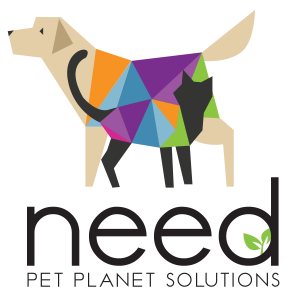By Dr. Al Townshend
It is becoming clear that the environment is one of the biggest concerns when related to pet cancer. Every day our pets can be exposed to a multitude of potential cancer-causing agents. The real challenge is that it is almost impossible to prevent exposure to some of these dangerous substances. Minimizing exposure is the goal in many instances.
The air we breath can be full of toxins like cigarette smoke, diesel fumes, automobile exhaust, fumes from a kerosene heater, and industrial pollutants that can contain heavy metals, known carcinogens, and irritants that can enter the respiratory system. Long term exposure to these items, especially to cigarette smoke are known to enhance the risk of cancer in not only humans but their pets as well.
The water we drink can also contain the same pollutants as well as ground contaminates like herbicides, pesticides, toxic chemicals, and many other potential cancer-causing agents.
The ground our pets walk on can expose them to herbicides such as glyphosate (Roundup), insecticides lawn chemicals, as well as heavy metals lead, arsenic, and mercury naturally contained in the soil.
Viruses are known causes of some cancers in pets. For example, feline leukemia virus is a common cause of death in cats. Up to 30% of cats persistently infected with this virus develop cancer. A type of cancerous wart (known as an oral papilloma) that develops in the mouth of dogs, especially younger dogs, is caused by a virus.
A number of common substances such as asbestos, benzene, formaldehyde, cadmium, nickel, radon, uranium, and vinyl chloride are also associated with causing cancer, which can reach your pet in the same way they reach humans.
Commercial pet foods can also contain substances known to cause cancer and so it is important to look at the ingredient list of the pet foods being fed and ask questions because not everything in some pet foods is listed.
Pet foods can contain dangerous substances known to increase the risk of cancer. Chemical preservatives like BHT/BHA and Ethoxyquin, artificial colorings, and artificial flavors may contain substances that increase the risk of cancer developing.
Aflatoxins found in moldy grains are not only toxic but can increase the potential for cancer. Grains grown with the use of the herbicide Roundup contain a toxic substance known as glyphosate, a known carcinogen.
Chew toys made with vinyl or hard plastic may contain bisphenol A (BPA) and phthalates that have been linked to cancer in pets.
There are some that suspect that pets in more urban and rural communities are more susceptible to exposure to substances in the environment than pet living in more metropolitan communities.
Asking questions and being as observant as possible will go a long way in limiting your pet’s exposure to these potential threats.
____
Additional Resources
Chemical Exposures and Pets
Do Enviornmental Pollutants Cause Cancer in Dogs?



